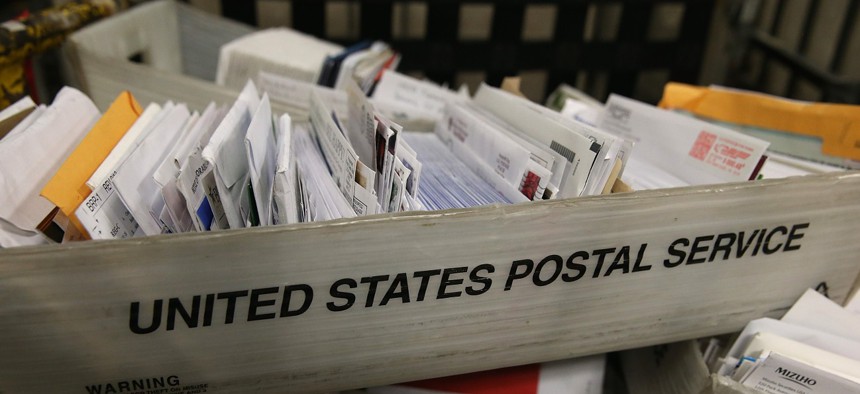USPS Is Promising More Severe Price Hikes Even As Revenues Grow by Nearly $1B – Government Executive
Press
USPS Is Promising More Severe Price Hikes Even As Revenues Grow by Nearly $1B
Postmaster General Louis DeJoy tells mailers to get used to “uncomfortable” rate increases as inflation is driving up the Postal Service’s costs.
Erik Katz
Senior Correspondent
May 6, 2022
The U.S. Postal Service is pledging to continue raising its prices at a historically unusual clip even as the agency has boosted its revenue significantly and is soon to realize significant savings from a reform measure President Biden recently signed into law.
USPS still saw a net loss of $639 million in the period between Jan. 1 and March 31, up from $82 million in the same period last year. The Postal Service Reform Act was not enshrined into law until after the second quarter of fiscal 2022, meaning the relief it will provide by eliminating the requirement that the Postal Service prefund health care costs for future retirees was not reflected in the financial results. USPS grew revenue in the quarter by about $900 million, a 5% increase from the same period in 2021. Volume grew by about 3%.
Still, Postmaster General Louis DeJoy said he would not back down from using his new authority to raise rates well above inflation over the next few years. The Postal Regulatory Commission allowed for the higher increases in 2020 and DeJoy has tapped into the authority on multiple occasions, calling them a key part of his plan to allow USPS to break even. USPS announced last month it would raise rates for regular, First-Class mail by 6.5% and increase them by 8.5% for package services beginning July 10.
At a board meeting on Thursday, DeJoy said the reform law—expected to save a combined $107 billion for USPS by eliminating existing debt and taking future liabilities off of its books—would not go far enough to get the agency out of the red.
“Therefore, from my perspective, the mailing industry needs to be prepared for continued use of our authority to raise prices on market dominant products at an uncomfortable rate until such time as we have accomplished our objective of projecting a trajectory that shows us becoming self-sustaining—as required by law,” DeJoy said. “While our pricing decisions are ultimately made under the authority of the Board of Governors, in the near term, I will most likely be advocating for these increases.”
PostCom, an association of large-scale mailers, and the Alliance of Nonprofit Mailers have asked the postal regulator to revoke that authority, noting the Postal Service’s financial outlook has changed dramatically since President Biden signed a reform measure into law. The groups previously sought to block the new authority from taking effect, but they lost the case in federal court. While the mailers said they are asking for a review in light of the new law that “radically changes” USPS finances, postal management countered the groups are simply seeking to relitigate a matter that has already been settled. The petition is still pending a decision from PRC.
In a recent interview with Government Executive, DeJoy said not using the high price increases would amount to a subsidy for large mailers and it would be “negligent” to not take advantage of his authority.
“Boy, I’d love to be Mr. Great Guy who didn’t raise the prices and didn’t change a thing, yet all of a sudden had the place profitable,” DeJoy said. “It doesn’t get done that way. It doesn’t get done without making change.”
When excluding factors outside of management’s control, such as inflationary adjustments to workers’ compensation costs, USPS lost $1.7 billion in the quarter. Revenue increases were driven by a 16% spike in marketing mail, a 5% jump in First-Class mail and a 1.3% increase in packages. The growth was not enough to outpace rising costs, however, as operating expenses jumped by $1.5 billion, or nearly 8%. USPS said the increases were driven largely by inflation, which DeJoy also noted in suggesting higher rate increases were necessary.
USPS significantly improved performance in the quarter, delivering 88% of First-Class mail on time, up from 78% in the same period last year. Those numbers were aided by DeJoy’s decision to slow down delivery windows for about 40% of mail—thus making it easier for USPS to meet its targets—but the average time for delivery also ticked down. The Postal Service also delivered 320 million COVID-19 test kits paid for by the federal government to U.S. households in the quarter.

